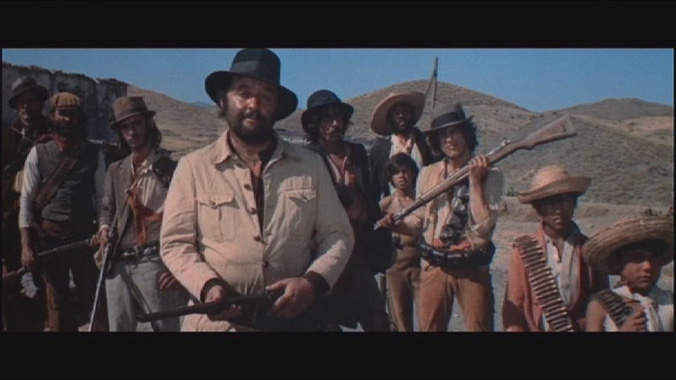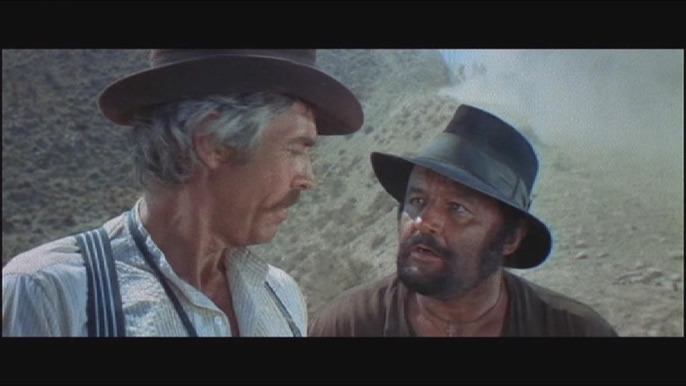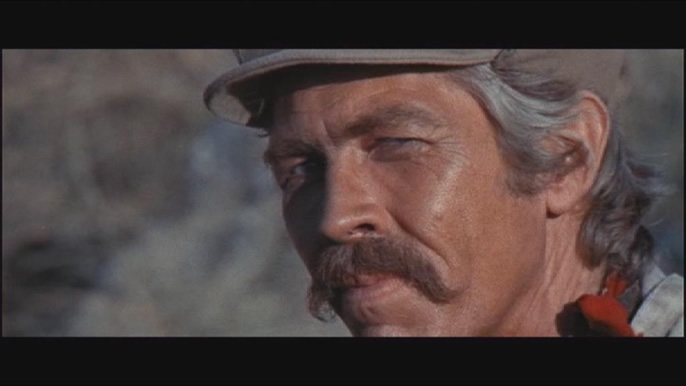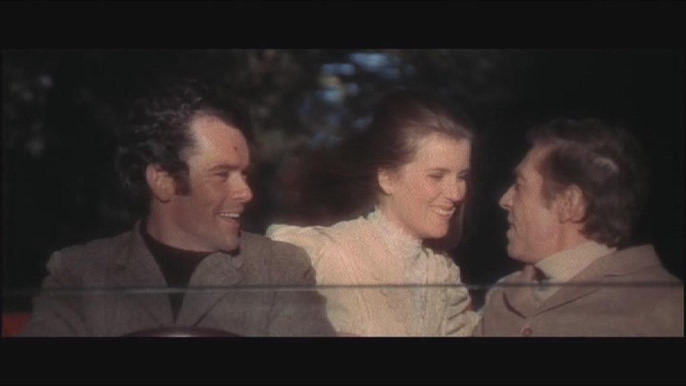|
A
complex elegy of "revolutionary era"
|
|
--
Discussion of Leone's "past Trilogy" (2): "Once
upon a time in Revolution"
|
|
|
|
|
|
|
From
every angle, the "Once upon a time in revolution"
was taken in 1971 before and after can be described the
most complex one in Sergio Leone's all the works. First
of all titles are complex, because the world still is not
what the film will have so many names. Previous "Once
upon a time in the west" ever was regarded by Leone
as his ended works with Italian-style "Spaghetti
Westerns film". In fact,this great work birthed
after the "Reward Trilogy", not only considered
as his last one "Spaghetti Westerns
film" by the director himself, even considered
by film critics as a "burial ceremony" to American
Westerns film. Therefore, when Leone faces to Europe's political
situation in 1960s and 1970s and begins to brew their own
next work, this surging in his mind is no longer the west
with violent sands of thousands miles, but a most fashionable,
most radical thought of the theme: Revolution. He is interested
in that took place in Mexico's unsuccessful revolution in
the early 20th century.
However, the name of the original film, go so far as to
associated from apply the mother tongue of his native home
- Roman slang "Giu la testa" (Looking down, ignore
it) became English title "Duck You Sucker!" (Meaning
into a "quick get on the ground, asshole!"). The
United States' distributors face the phrases that they not
often use and not too gentle, also is for the box office,
have to according to drama re-played a "A Fistful of
Dynamite" it is similar name with Leone's first Spaghetti
Westerns film "A
Fistful of Dollars". But in the end, only the name
given by the French who revered Italian director Leone is
Not only romantic, loud , with the academic colors, also
meet the tastes of the film criticism,and was recognized
by researchers for Leone community, its English just is
"Once Upon a Time in Revolution".
|
| Except
the title name, the various edition of the film, difficult
lens shooting, complicated work of postedit, also one after
another episode fulled metaphor....etc, All make this Italian
film that subtitle in the starting of the film is actually
Mao Zedong's quotations (the revolution is not a dinner party)
with a wonderful complexity. The same show of this complexity,
as well as Ennio Morricone's moving soundtrack that is novels
and profound and Meaningful. |
| The
first lens of the film is a fulled implication of features
where a force of urinary stream is impacting an ant's formicary
near a root of a big tree. Followed one of the theme of music
sounded by the audience ears: the motivation of "Beggars
march". This is a wonderful and unique selection of sound,
full of banter and ironic short phrases, on behalf of the
owner of the urinary stream, one of the film's hero, due to
the origin of poverty and so thinking rich, but stumbled accidentally
doing "revolution" of the Mexican peasant Juan.
In the Morricone's music idea, it is to be performanced by
the "Beggar's march" composited by six holes flageolet,
Bason, banjo or guitar, whistles and military drum that a
cuckoo sound of hungry stomachs of Juan and his family and
their subsequent hiccup sound after fed up. |
| The
one who follows the sound suggesting another hero to appear
is such a beautiful, mellow whistling solo, that can be found
only by Morricone, at the same time, in that distant, misty,
and attracted a reverie of melody, the lyrics to be called
the shortest with a specific meaning in the music of Leone's
works appeared for the first time. the syllable consisted
by four letters (S-E-A-N), it actually is Irish name pronunciation
of another hero in the film - from the Irish explosives expert
John --Sean. Thus, in the first group of lens of the opening,
the composer revealed the two hero's origin and background
by way of the most concise way of approximating a overture,
through music to link their fate together. In the seemingly
(or listening to like) concise, inspirational singing of melodies
that is an extremely simple even with funny colorful musical
motives, already implies a lot of visual images and rich,
deep-rooted drama factor. And this complexity performed by
the music, also from one side shows why Sergio Leone - Ennio
Morricone's work can withstand the test of time, last and
fresh. |
| When
Juan and his family participate to explode the bank door,
actually being action to rescue the detained Revolutionaries,
the melody of "Beggar's march"suddenly was inserted
the famous theme of motivation of Mozart's "G major strings
serenade", expressed a hidden deep ideas in the lens
: put up mockery and subversion as Juan's way to classical
music and the upper class and the bourgeoisie represented
by the classical music. Except this audio-visual light point
left the audience, it just is flashback lens cut for several
times that make people with floating of mind very much: Distant
Homeland Ireland, youth John and his good friend Nolan who's
name also same is Sean (John), are traveling together in a
road where the grass looks like a green carpet, that one who
is sitting on the back seat, is a beautiful, gentle girl who
is loved by the two young people ..... |
|
At the
moment, a hooked soul song without words Sung by Morricone's
Queen's soprano Edda Dell'orso,as an extremely comfortable,
fresh, tactful melody floating above the instrumental theme
soundtrack of the film as an outstanding highlight form,
has become another elegy dedicated by Italian Sergio Leone
for Another time and space lingered in his mind - revolutionary
era. At this moment, the maverick film masters has make
full preparations from all aspects for his next great works
that is " Once upon a time in America" in 12 years
later.
Sep.17,2007
(Abbreviated version)
|
|
|






